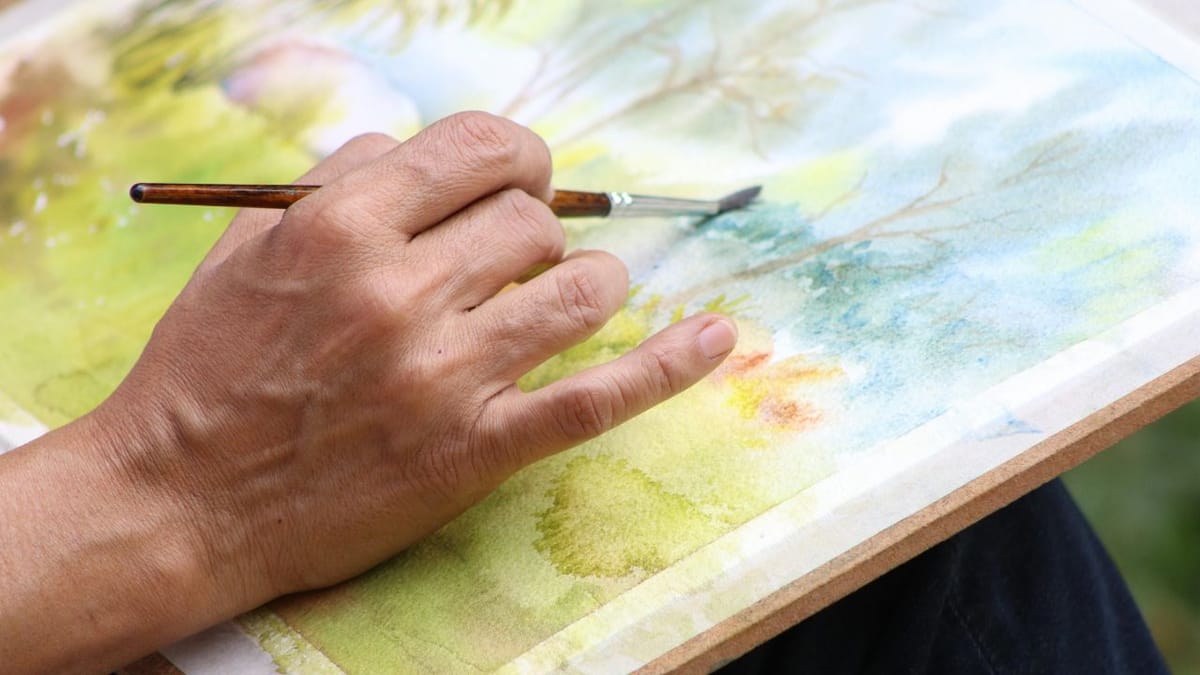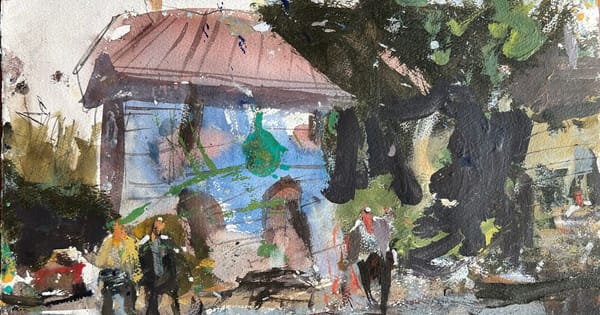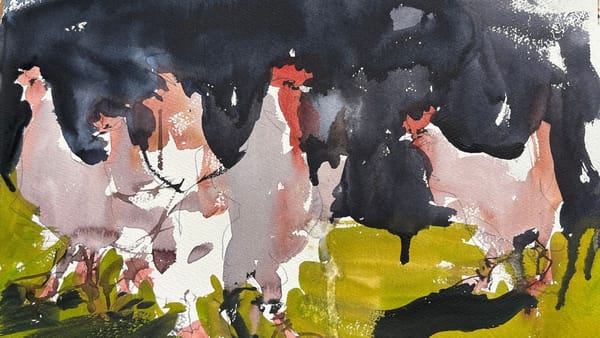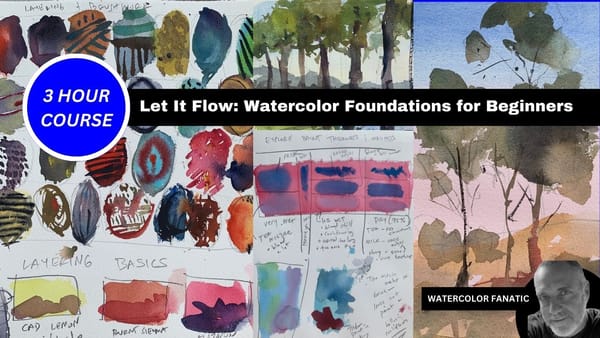5 Common Mistakes Watercolor Beginners Make
Avoid common watercolor beginner mistakes like overworking, poor paper choice, and tight painting. Learn how to loosen up and enjoy the process.

Watercolor can be a VERY tricky medium — full of surprises, flow, and at times it seems to have a mind of its own. If you're just starting out, it's easy to fall into some common traps that can slow down your progress or make painting more frustrating than fun. The good news? Most of these mistakes are easy to avoid once you're aware of them.
Are You Making These Common Beginner Watercolor Mistakes? If so, Here's How to Avoid Them
Here are 5 beginner pitfalls I see all the time — and how to sidestep them.
1. Focusing Too Much on the Final Result
It’s natural to want every painting to be a masterpiece. But if you're overly focused on creating “finished art,” you’ll likely tighten up, second-guess every brushstroke, and miss out on the joy of experimentation. Watercolor shines when it’s loose, expressive, and a bit unpredictable. Here's a great inspirational watercolor tutorial for experimenting with various techniques.
2. Ignoring Water Control
Water is your main “tool” in watercolor. Too much and you’ll get blooms and puddles. Too little and your brush drags. Beginners often overlook how important it is to understand how wet the brush, paper, and paint are at all times. If you want some great tips on setting up your workspace and avoiding this issue, then check out the article and video I published with tons of helpful tips on how to set up your Watercolor workspace.
3. Using Cheap Paper (Thinking It Doesn’t Matter)
Low-quality paper can ruin your progress. It buckles, pills, and doesn’t let paint flow or lift properly. Even great technique can look poor on bad paper. I wrote this article for how to choose the BEST watercolor paper for beginners and all levels without overspending.
4. Overworking the Painting
Beginners often keep going long after the painting should be done. More layers, more fixing, more fiddling. This usually leads to muddy colors, lost highlights, and frustration. Here's a great demo for beginners on how to apply paint and leave it alone!
Skipping the Fundamentals
It’s tempting to dive right into landscapes or florals — but skipping basics like wet-in-wet, color mixing, and brush control often leads to frustration. You need to read the article and watch the video I created on learning the 20 Watercolor Techniques
Final Thoughts
If you're making any of these mistakes — good! That means you're learning. The key is to stay loose, stay curious, and enjoy the process.
Joining Fanatic Plus helps support the site and gives you full access to every premium course and in-depth tutorial.
Join Fanatic Plus



